In a small village in Sardinia's mountainous interior, 102-year-old Maria Pisu still walks two miles to market every morning, a journey she has made for over eight decades through challenging terrain that would leave people half her age breathless. Her daily routine hasn't changed much in decades: she tends her vegetable garden, shares meals with neighbors, and moves through her day with a vitality that defies her age.
Maria isn't an anomaly. She lives in one of the world's "Blue Zones"—regions where people routinely live to 100 and beyond while maintaining remarkable health and vitality. These extraordinary pockets of longevity, identified by researcher Dan Buettner, include Sardinia, Italy; Okinawa, Japan; Loma Linda, California; the Nicoya Peninsula in Costa Rica; and Ikaria, Greece.
What makes these populations so special? It's not access to cutting-edge medical technology or expensive supplements. Instead, their secrets lie in simple, sustainable lifestyle practices that have evolved naturally over generations. Despite their geographic and cultural differences, these communities share remarkable similarities that provide a practical roadmap for healthy aging.
The most encouraging discovery? These aren't genetic anomalies or people following complex protocols. They're ordinary individuals whose daily choices—how they move, eat, connect with others, and approach life's challenges—create extraordinary outcomes. Their wisdom offers actionable insights that anyone can implement immediately, regardless of age or circumstances.
1. The Sardinian Secret: Movement as Daily Life
Maria's story reveals the first secret of exceptional longevity: movement isn't something you add to your day—it's woven seamlessly into everything you do. Her two-mile morning walk to market isn't exercise; it's transportation. Her gardening isn't a workout; it's how she grows food. Her daily activities naturally provide the physical activity that many of us struggle to fit into gym schedules.
Research consistently shows that this type of integrated movement may be more beneficial than sporadic, intense exercise sessions. Maria and her neighbors don't follow formal exercise programs, yet they remain remarkably strong and mobile well into their second century. Their activity comes through necessary daily tasks: walking on mountainous terrain, tending animals, gardening, and performing household tasks manually.
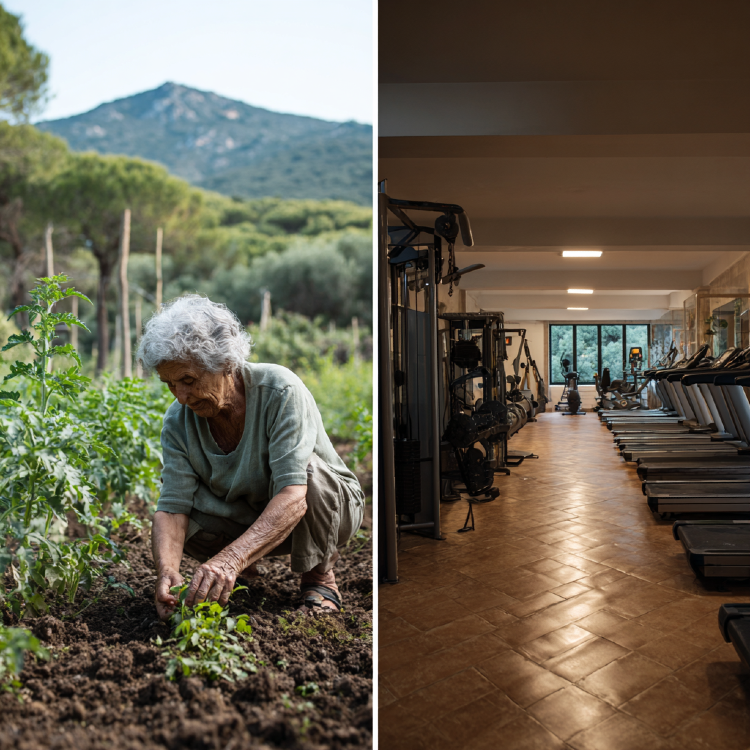
The physical demands of traditional Sardinian life naturally maintain cardiovascular fitness, muscle strength, and balance. Walking on uneven terrain challenges stability and coordination. Carrying water, tending gardens, and performing manual labor preserve functional strength. These activities occur daily, providing consistency that's often missing from modern exercise routines.
What sets this approach apart is its sustainability. Unlike gym memberships that people abandon or exercise programs that feel like burdens, integrated movement becomes an essential part of life. There's no willpower required when movement serves practical purposes and supports daily living.
For those looking to maintain muscle mass and strength as they age, understanding how to maintain muscle mass after 60 becomes crucial, especially when incorporating Blue Zone principles of natural movement.

Practical Application: Look for opportunities to build movement into necessary activities. Walk or bike for short errands instead of driving. Take the stairs instead of the elevators. Choose active forms of entertainment like dancing or hiking. Park farther away or get off public transit one stop early. The goal isn't to add formal exercise time but to make physical activity a natural part of daily life.
2. Okinawan Wisdom: The 80% Rule and Plant-Forward Eating
Sachiko Tamashiro, 98, from Okinawa, embodies the second longevity secret through her practice of "hara hachi bu"—eating until 80% full. This cultural practice, taught from childhood, naturally promotes caloric moderation without the deprivation associated with formal dieting. Sachiko eats slowly and mindfully, putting down her chopsticks between bites and paying attention to satiety signals that many people learn to ignore.
The traditional Okinawan diet that sustained Sachiko throughout her life consisted of approximately 85% plant foods. Sweet potatoes, not rice, formed the carbohydrate foundation, providing complex nutrients and fiber. Vegetables dominated meals, particularly bitter melon with its anti-diabetic properties, and various seaweeds rich in minerals and unique bioactive compounds.
Soy products like tofu and miso and plant protein contain beneficial compounds that may protect against hormone-related cancers and support bone health.
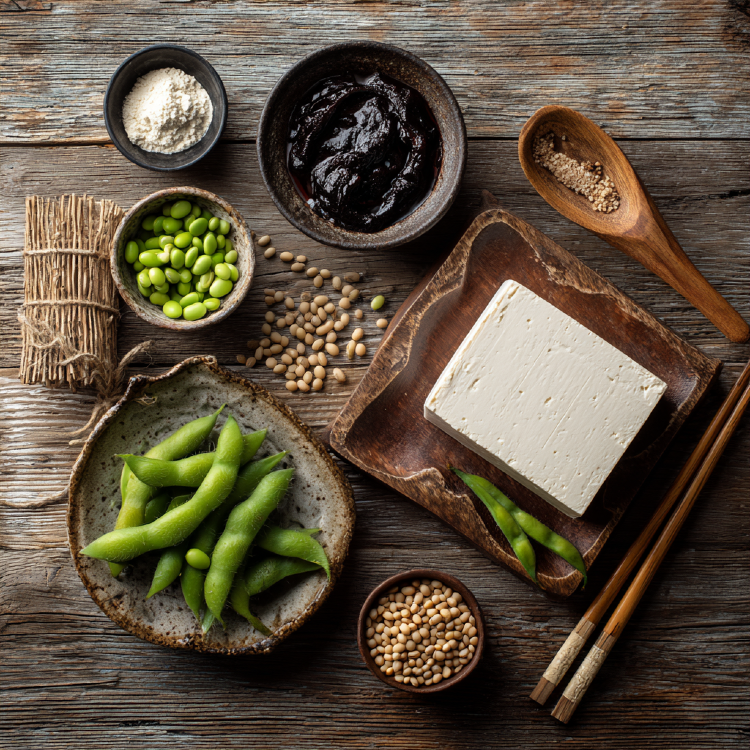
The social context of eating proved equally important. Meals were typically shared with family or community members, and eaten slowly and mindfully. Food represented more than fuel—it was a means of nurturing relationships and expressing care for others—the preparation and sharing of meals provided purpose, social connection, and natural physical activity.
Perhaps most significantly, the Okinawan approach demonstrated that healthy eating need not involve restriction or complicated rules. The 80% principle worked because it honored natural satiety signals while the plant-forward diet provided abundant nutrition and satisfaction.
Understanding nutrition for aging adults can help you apply these Okinawan principles to modern life, ensuring you get the nutrients needed for healthy aging while following the wisdom of the world's longest-living people.
Practical Application: Practice the 80% rule by eating more slowly and paying attention to hunger and fullness cues. Put your fork down between bites and pause mid-meal to assess your satiety level. Build meals around vegetables, whole grains, and plant proteins while including smaller amounts of animal proteins. Create pleasant eating environments free from distractions, and when possible, share meals with others to enhance the social and mindful aspects of eating.
3. Mediterranean Magic: Social Eating and Quality Ingredients
Giuseppe Rossi, a 98-year-old from Italy's Apennine Mountains, reveals the third longevity secret through his approach to food that combines pleasure with health. His diet includes bread, pasta, olive oil, wine, and regular small portions of meat—foods that some modern diet trends would discourage. Yet Giuseppe's approach embodies principles that promote longevity within a framework of culinary enjoyment.
The quality of ingredients makes all the difference. Giuseppe's olive oil, pressed from trees he planted decades ago, provides monounsaturated fats and antioxidant compounds that support cardiovascular health. His wine, consumed in small amounts with meals, may provide additional cardiovascular benefits while enhancing the social and cultural richness of dining.
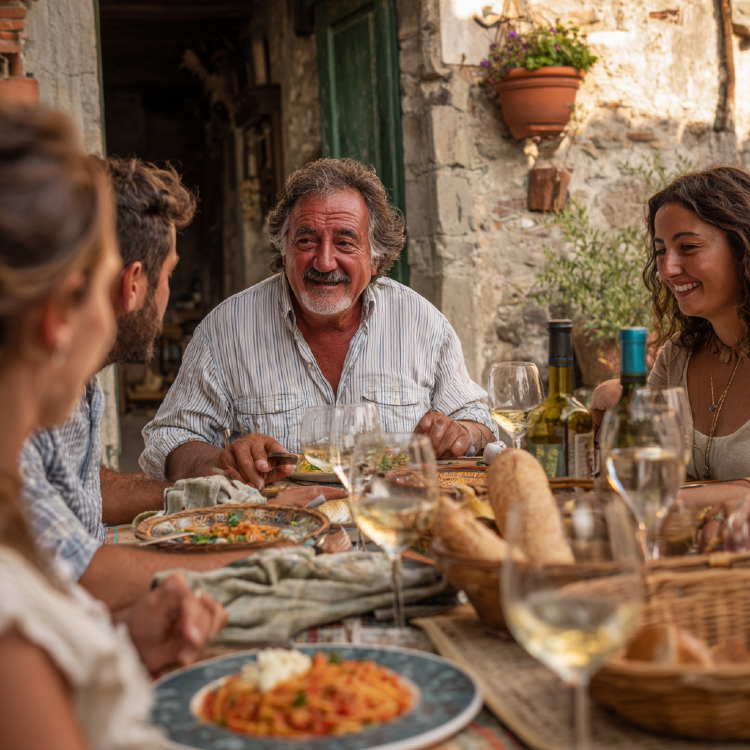
Portion control happens naturally through mindful eating and social meal structures. Giuseppe's lunch is his largest meal, featuring pasta with vegetables, a small portion of protein, and a glass of wine. Dinner is lighter, often soup and vegetables. Meals are community events, shared with family and neighbors, eaten slowly and with attention to the food and conversation.
The Mediterranean approach demonstrates that longevity diets aren't about restriction—they're about eating real food in reasonable amounts while maintaining an active lifestyle and strong social connections. The pleasure derived from food, combined with high-quality ingredients and social context, creates a sustainable approach that people can maintain joyfully throughout life.
Giuseppe's relationship with alcohol exemplifies the Mediterranean approach to potentially harmful substances. Rather than abstaining completely or drinking to excess, he consumes wine in moderation, with meals, and as part of social and cultural traditions. This pattern appears to provide benefits while minimizing risks.
The scientific research behind the benefits of Mediterranean diet shows why this approach has been so effective for promoting longevity and reducing the risk of age-related diseases.
Practical Application: Focus on food quality over strict dietary rules. Choose whole, minimally processed ingredients and prepare them with care and attention. Make meals social events when possible, eating slowly and engaging in conversation. If you drink alcohol, do so in moderation with meals rather than alone. Create pleasant eating environments that encourage mindfulness and enjoyment rather than rushed consumption.
4. The Japanese Mountain Villages: Seasonal Living and Purpose
Kenji Yamamoto, 101, from a mountain village in Nagano Prefecture, embodies the fourth longevity secret through his deep connection to seasonal rhythms and unwavering sense of purpose. His life revolves around natural cycles that have characterized rural Japanese existence for centuries, providing both physical activity and profound meaning.
Kenji's diet follows traditional Japanese patterns with regional variations based on seasonal availability. Spring brings wild mountain vegetables, summer provides diverse garden produce, fall offers nuts and preserved foods for winter, and winter features stored grains and preserved vegetables. This seasonal variation provides diverse nutrients throughout the year while connecting diet to natural cycles.
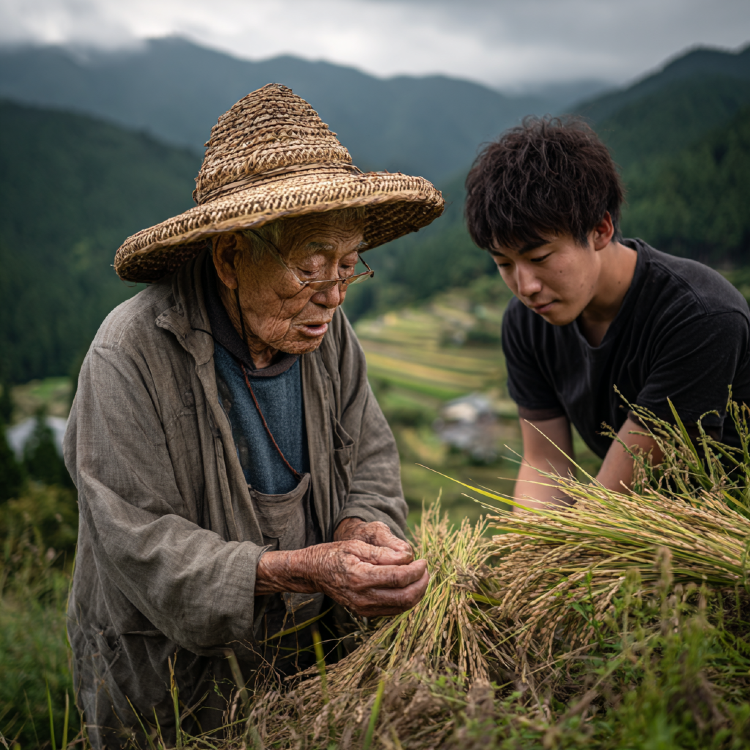
The concept of "ikigai"—life purpose or reason for being—remains central to Kenji's vitality. At 101, he continues to work his fields, gather wild foods from mountain paths, and serve as a repository of traditional knowledge for younger villagers. His purpose isn't abstract but practical: his community depends on his knowledge of local history, farming methods, and natural resource management.
Physical activity comes through farming and forest management that requires strength, endurance, and functional movement patterns. Kenji climbs mountain paths to gather wild foods, tends fields that demand various physical skills, and performs manual labor that maintains his remarkable strength and mobility. This work provides both physical benefits and deep satisfaction.
The social structure of his village emphasizes intergenerational cooperation and mutual support. Younger villagers help with heavy tasks while elders provide knowledge, experience, and leadership. This system ensures that older adults remain valued contributors rather than becoming isolated or dependent.
Embracing the principles of positive aging can help you find your own sense of purpose and maintain a positive outlook that supports both mental and physical health as you age.
Practical Application: Identify your personal ikigai by exploring activities that combine what you love, what you're good at, what the world needs, and what you can be rewarded for. Look for ways to contribute your knowledge and experience to others, whether through mentoring, volunteering, or community involvement. Embrace seasonal eating by choosing local, seasonal produce when possible and varying your diet throughout the year.
5. Universal Principles: What All Centenarians Share
Despite living in different cultures and eating different foods, the world's longest-lived people share several key characteristics that provide a universal blueprint for healthy aging. These principles transcend specific dietary rules or exercise programs, focusing instead on fundamental approaches to living that support both physical health and life satisfaction.
Stress resilience through acceptance and support characterizes all centenarian populations. These individuals have experienced significant hardships—wars, economic challenges, health problems, and loss of loved ones—yet maintain positive outlooks and strong social connections. They demonstrate remarkable acceptance of life's impermanence while remaining engaged with daily experiences.
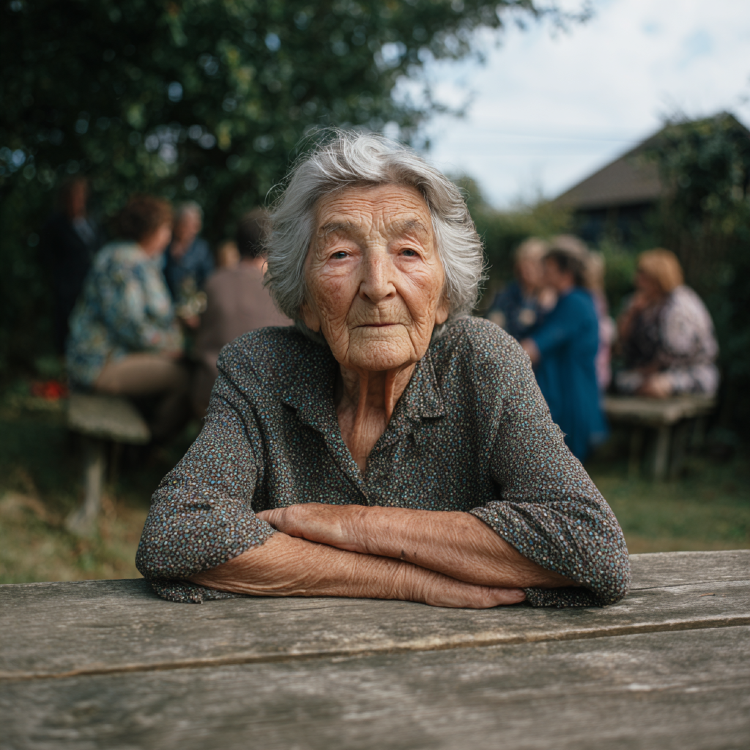
Their stress management involves daily practices like meditation or prayer, strong social support from family and community, and philosophical frameworks that help them find meaning in challenges. Rather than avoiding stress, they've developed effective ways of processing it while maintaining perspective and hope.
Strong social connections and community engagement provide practical support, emotional validation, and accountability for healthy behaviors. Quality relationships are characterized by mutual respect, trust, and emotional intimacy. These connections often span generations, providing both wisdom sharing and continued learning opportunities.
Community involvement gives centenarians continued roles and purposes that extend beyond personal concerns. Whether caring for family members, contributing to religious organizations, or maintaining cultural traditions, they remain valued contributors to their communities rather than passive recipients of care.
Consistent daily habits over perfection mark the centenarian approach to healthy living. They don't follow perfect diets, exercise programs, or lifestyle routines. Instead, they maintain reasonably healthy patterns most of the time while allowing for flexibility, enjoyment, and life's inevitable imperfections.
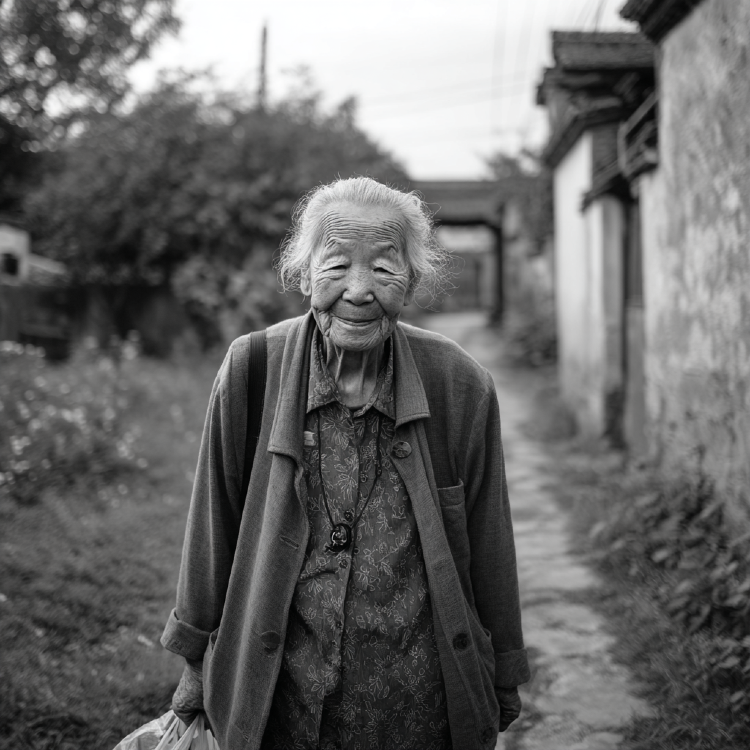
This consistency over decades creates compound effects that dramatically impact aging trajectories. Small, sustainable practices maintained over time often produce better results than dramatic changes that can't be sustained long-term.
For comprehensive guidance on implementing these principles, explore our 7 top healthy aging tips that provide practical strategies based on the latest research in longevity science.
Sleep quality, which centenarians prioritize naturally through their lifestyle rhythms, plays a crucial role in healthy aging. Learning to master sleep hygiene can help you implement this fundamental aspect of Blue Zone living.
Practical Application: Build a support network that includes people of different ages and backgrounds. Develop daily practices that help you process stress, whether through meditation, prayer, time in nature, or creative expression. Focus on consistency rather than perfection in healthy habits—aim for good choices 80% of the time rather than perfect choices 100% of the time. Find ways to contribute to others' well-being, creating purpose that extends beyond personal concerns.
Your Path to Blue Zone Living
The remarkable longevity of Blue Zone populations isn't the result of genetic luck or access to secret interventions. Their exceptional health and lifespan emerge from simple, sustainable practices woven into meaningful, connected lives. These aren't people who set out to live to 100—they created lives worth living that naturally supported exceptional longevity.
The most encouraging aspect of Blue Zone research is how accessible these principles are. You don't need to move to a remote village or completely overhaul your lifestyle. You can begin implementing these secrets immediately, wherever you are, whatever your circumstances.
Start with the principle that resonates most strongly with you. Perhaps it's building more natural movement into your daily routine, practicing mindful eating with the 80% rule, creating more social meal experiences, finding your ikigai, or developing better stress resilience through community connection.
Remember that the centenarians didn't achieve their remarkable longevity through dramatic interventions or perfect adherence to complex protocols. They succeeded through patient, persistent practice of simple principles over many decades. Small changes, maintained consistently, compound over time to create extraordinary results.
Your journey toward Blue Zone living begins with a single step taken today. Choose one insight from these remarkable populations and begin weaving it into your daily life. Your future self—and the community of people whose lives you touch—will benefit from the wisdom of those who have mastered the art of living long and living well.
Ready to Dive Deeper Into the Science of Longevity?
While these Blue Zone secrets provide a powerful foundation for healthy aging, they represent just the beginning of what modern longevity science has to offer. If you're inspired to learn more about the cutting-edge research behind extending both lifespan and healthspan, our comprehensive guide "The Science of Longevity: How to Live Longer and Healthier" takes you far beyond Blue Zone wisdom. This complete resource covers everything from the biology of aging and advanced nutritional strategies to exercise protocols, stress management techniques, and emerging longevity interventions. Discover evidence-based approaches to building your personalized longevity plan and unlock the full potential of healthy aging. Get your copy today and start your journey toward optimal aging with the latest scientific insights at your fingertips.


